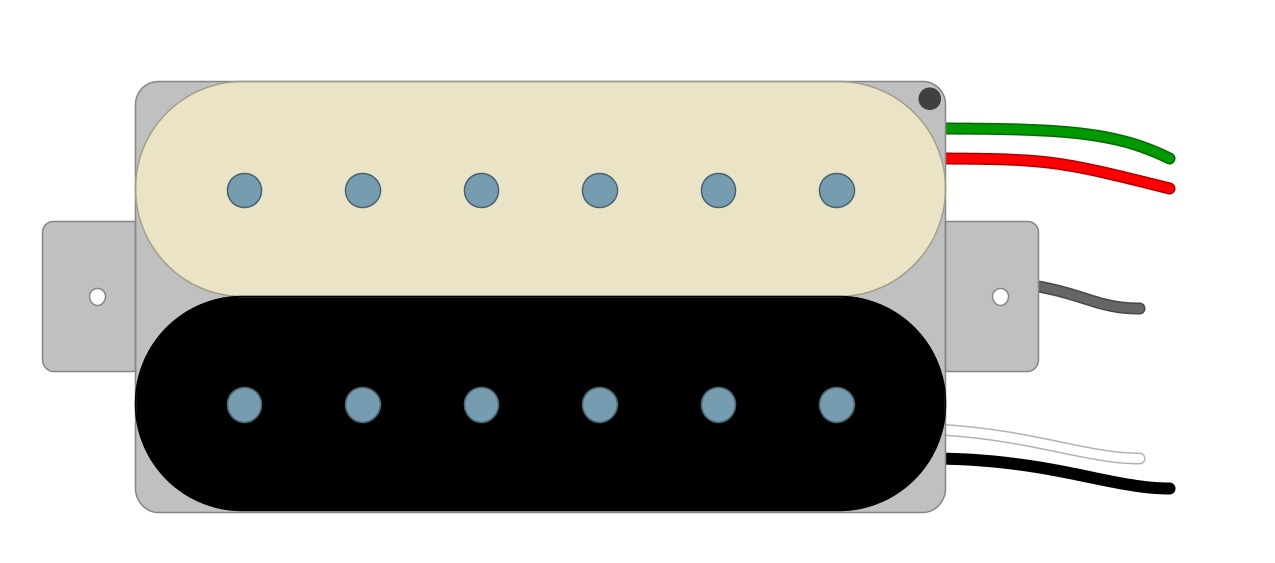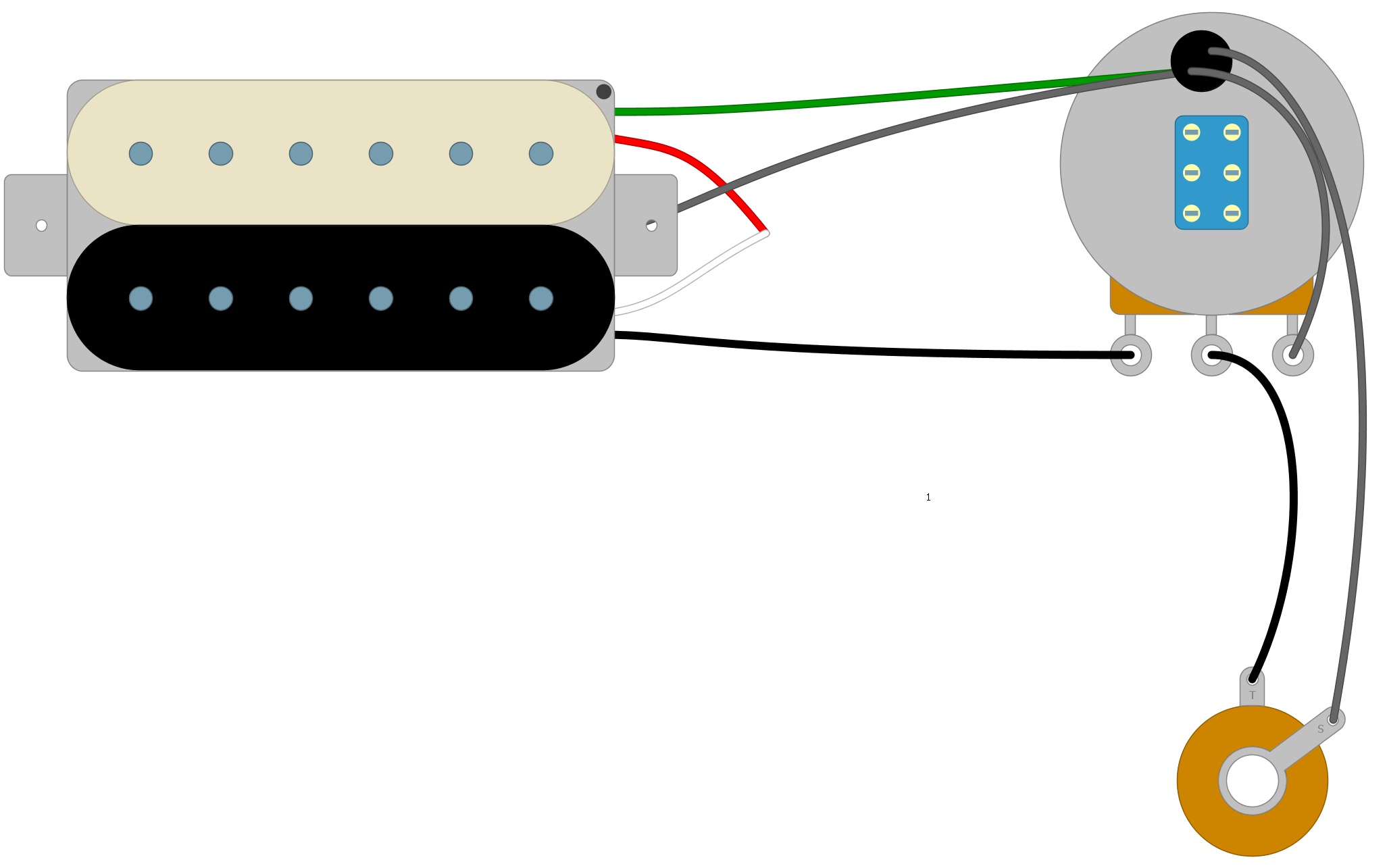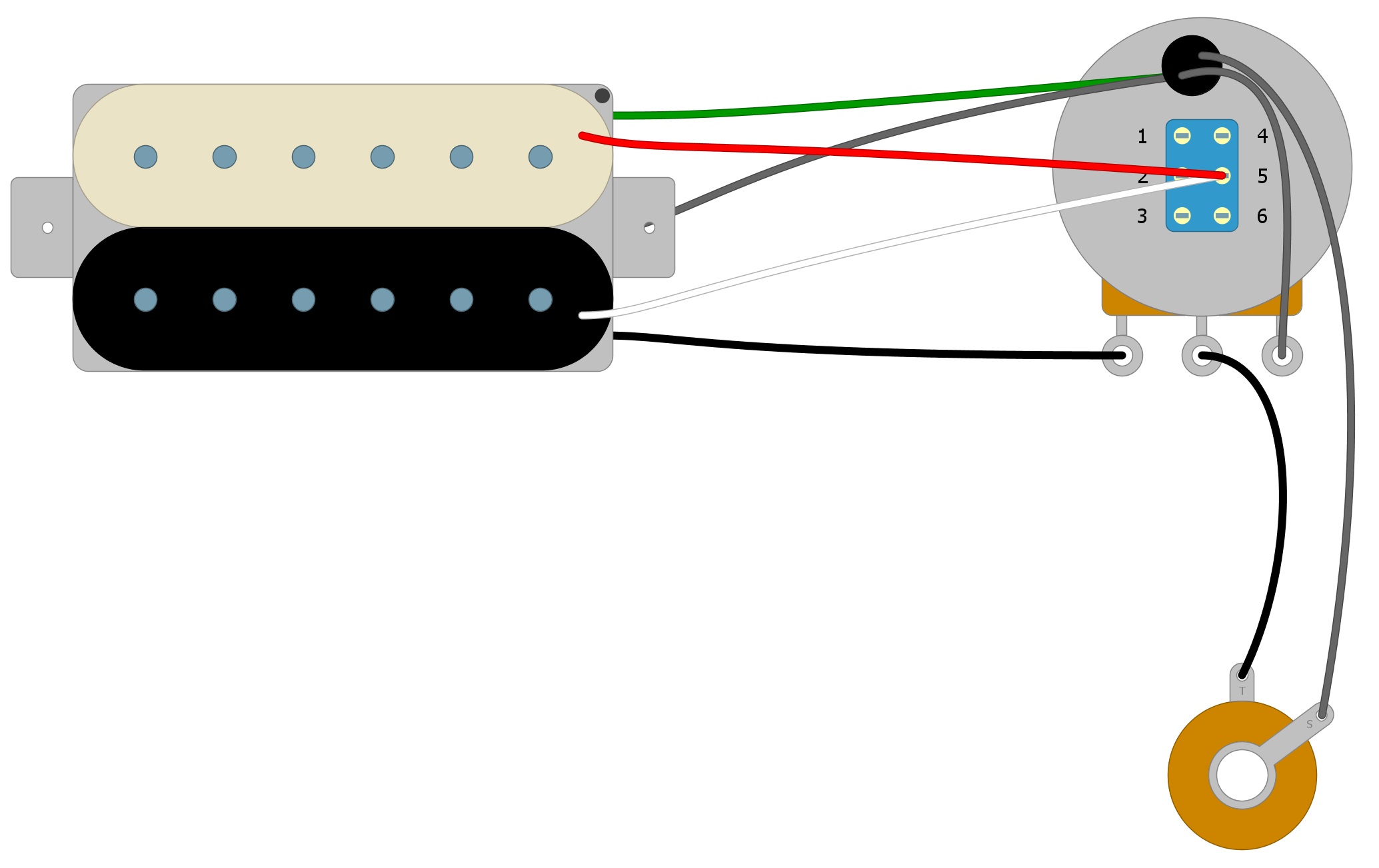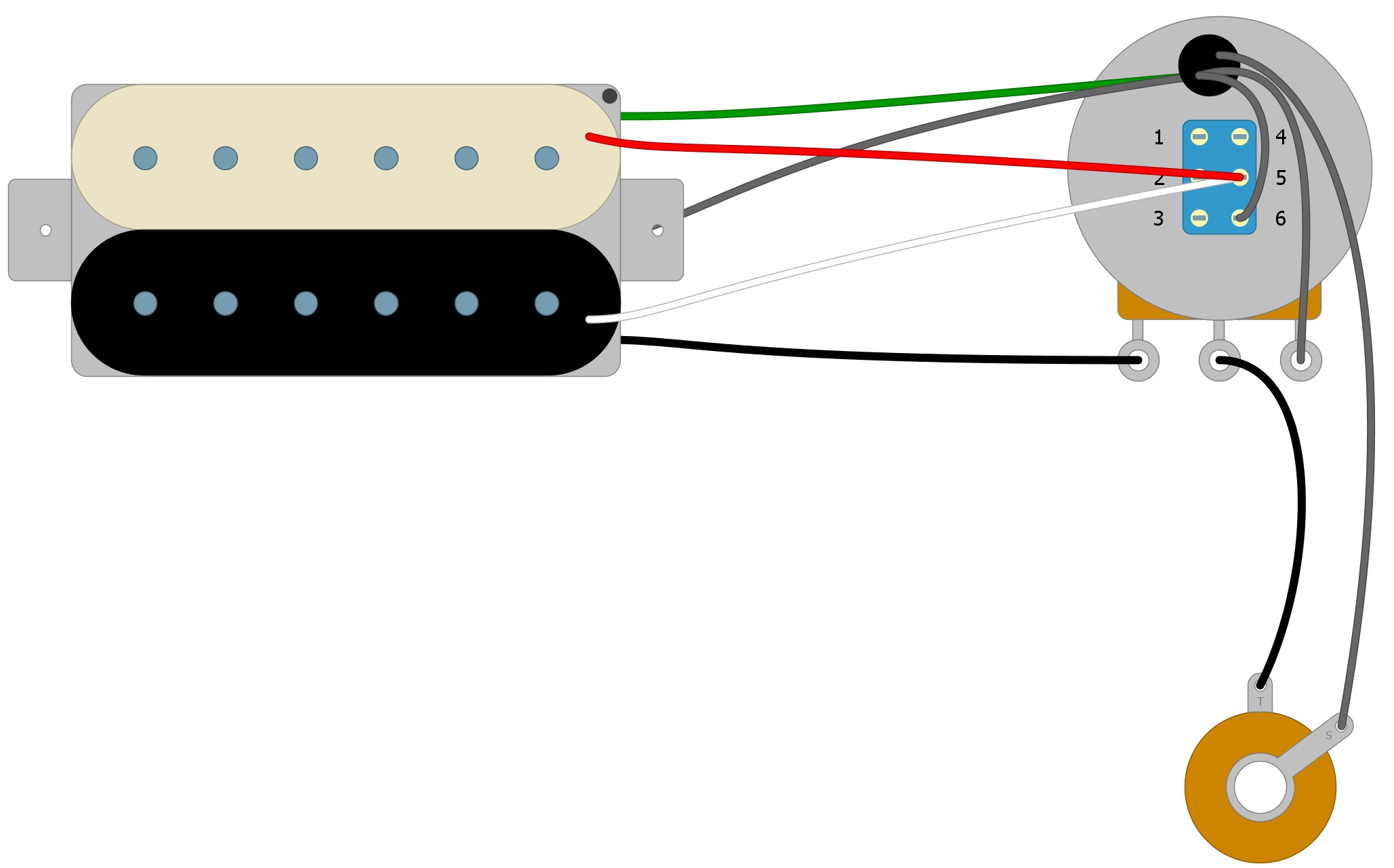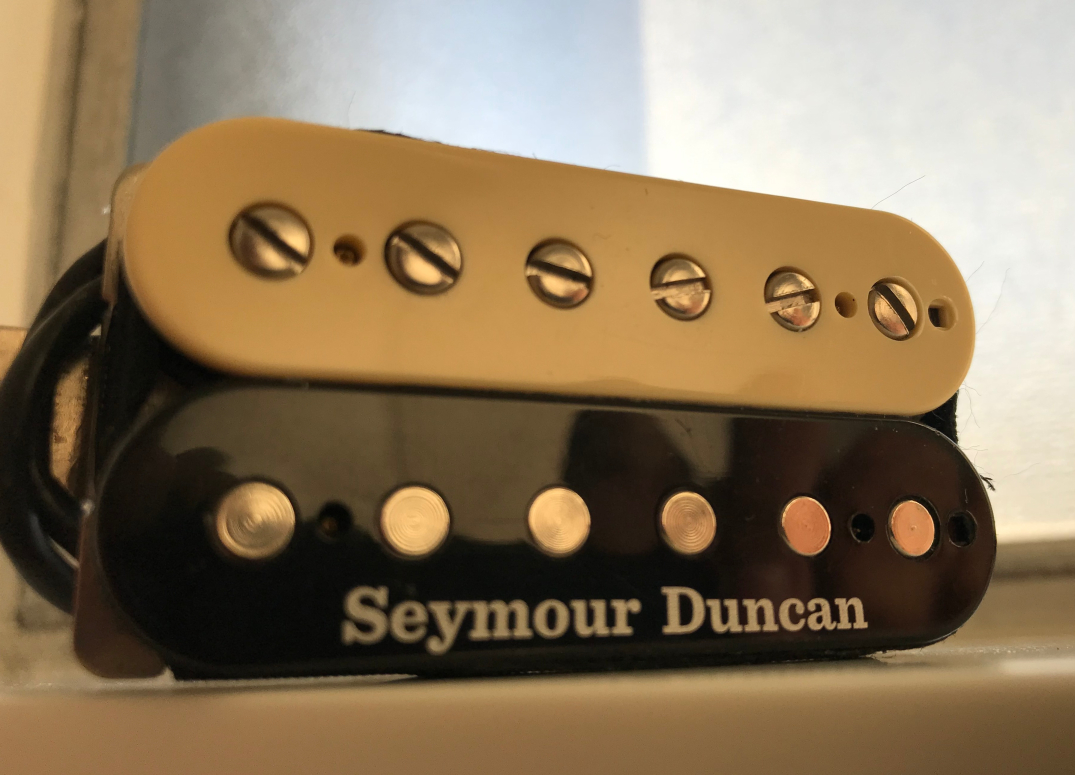
By Ed Malaker
Posted 02/05/2020
In this post, we’ll be walking you through the coil-splitting of a Seymour Duncan SH-4 JB. Two coils are usually used in a humbucker pickup, but a switch can be used to turn one of them off, giving you access to single-coil tones. Single-coil tones are typically brighter and more precise than the warm and smooth humbucker sound.
The Seymour Duncan SH-4 JB
The Seymour Duncan SH-4 JB is one of Seymour Duncan’s most popular pickups. It outputs lots of volume and remains clear, even when heavily distorted. It features an AlNico 5 magnet and adjustable pole pieces.
The Switch
Almost any coil-splitting modification requires a switch. For this article, we are going to use a push-pull pot because it allows our mod to be reversible. You can use a mini-toggle switch, however, if you prefer. The downside to the push-pull pot is that the switching mechanism requires more space than a standard Volume control. Some guitars may not have enough room. You will need to check your guitar before you decide which switch to use.
A toggle switch would be wired the same way; you would just have the added challenge of installing it in your guitar. Guitars that have pickguards with a lot of open space underneath are candidates for the toggle switch, but be prepared to do some irreversible drilling.
The Push-Pull Switch
A Push-Pull pot is a standard Volume or Tone control, with a switch built into it. This design allows you to pull out or push in the shaft of the pot to toggle the switch.
Installing the Pickup
If you wanted to do this modification with a pickup other than the SH-4 JB, you would first need to figure out which of the colored wires go to each coil. Since we’re going with the SH-4 JB, however, we already know.
The Green and Red wires go to one of the coils while the White and Black wires go to the other. The bare wire is a shield wire that always goes to Ground (Fig 1).
Fig 1
The standard way to wire the SH-4 JB is to solder the White and Red wires together. We then use the Black wire as the Hot, and the Green as the Ground. The Bare and Green wires are often soldered together (Fig 2).
Fig 2
Next, we install the pickup. If you need step-by-step instructions for this part, take a look at the Seymour Duncan SH-4 JB Wiring Diagram (Fig 3).
Fig 3
Splitting The Pickup
First, change the standard Volume pot to a Push-Pull pot. The Push-Pull pot will be larger and have more connection tabs on it, but you should be able to see the three that were on the original. Wire these three tabs the same way as the original pot was wired (Fig 4).
Fig 4
Now we will number the additional tabs on the Push-Pull pot, one through six (Fig 5).
Fig 5
Now take the Red and White wires that we soldered together in Fig 2 and solder them to Tab 5 on the Push-Pull pot (Fig 6).
Fig 6
Solder a wire from Tab 6 to the back of the Volume pot.
A note here: it can be hard to fit all of the ground wires on the back of a Push-Pull pot. In this case, it might be easier to move your ground wires to the Tone pot if you have one (Fig 7).
Fig 7
And now, you’re finished!
Another note: If you find that the coil is splitting when the Volume knob is pushed-in instead of pulled-out, move the Ground wire from Tab 6 to Tab 4.
Summary
When the Volume knob is pushed in, your guitar signal travels through the first coil, starting at the Black wire and continues through the second coil exiting the Green wire. This is the way the pickup is designed to operate.
When the Volume knob is pulled out, your guitar signal travels through the first coil, starting at the Black wire, but this time it exits through the new ground wire that you installed, coming from the switch. Your signal never goes through the second coil, because your pickup is now “split.”
Remember: you can split any humbucker that has four wires. The only difference will be the color that goes to each coil.
For more articles on guitar electronics, visit humbuckersoup.com.

